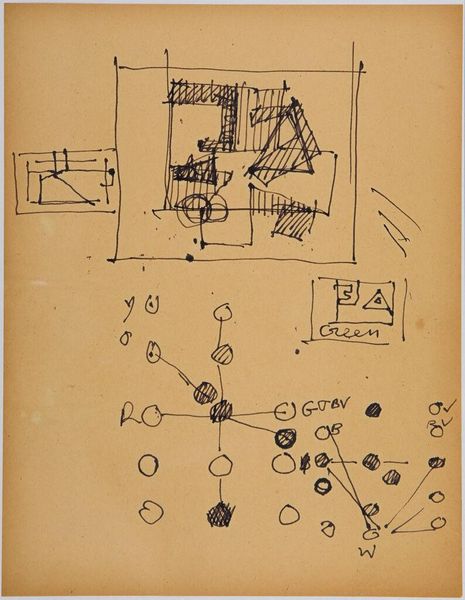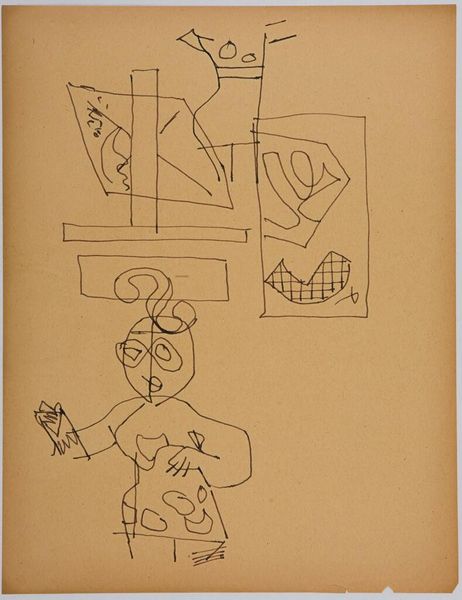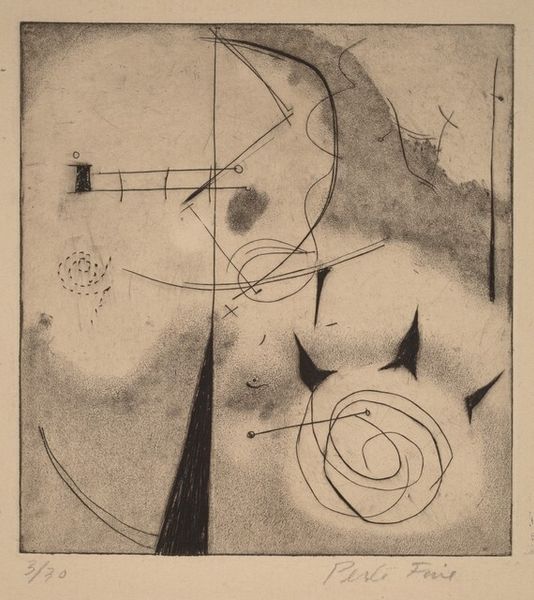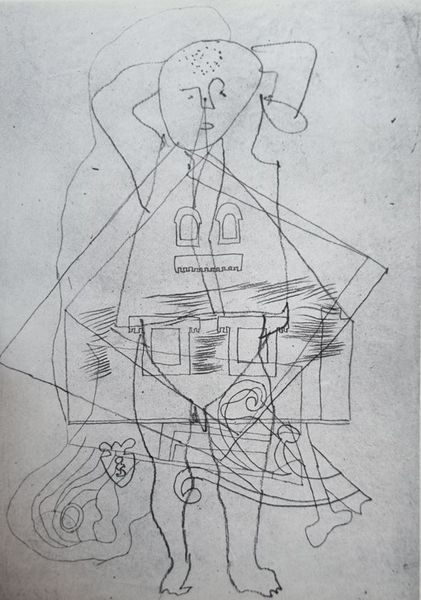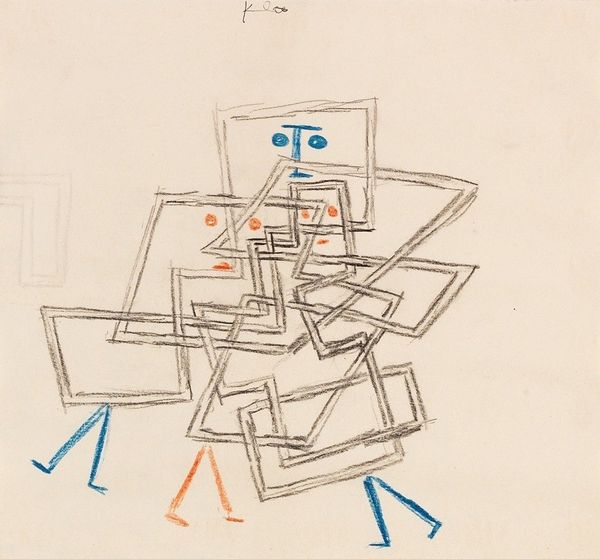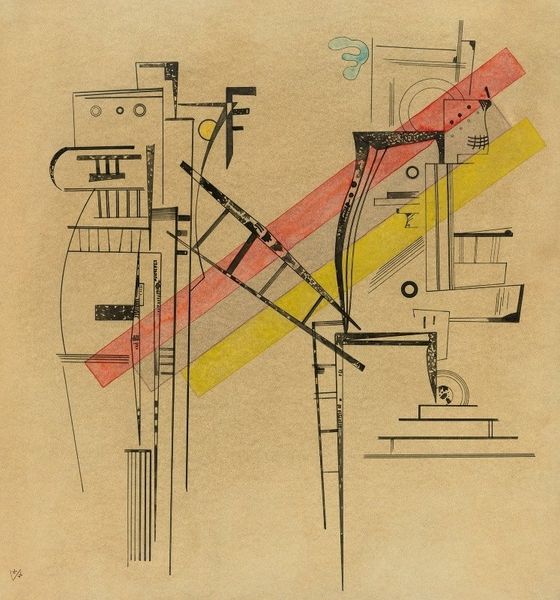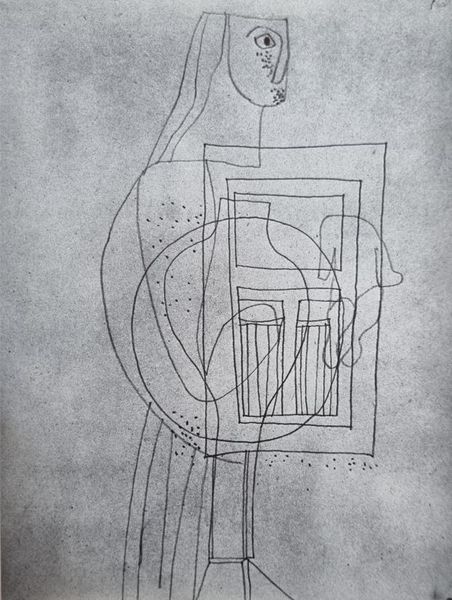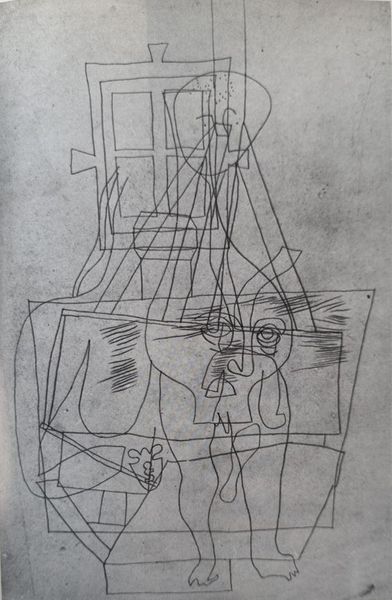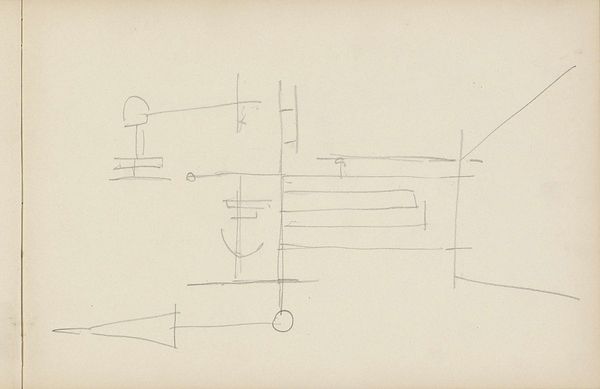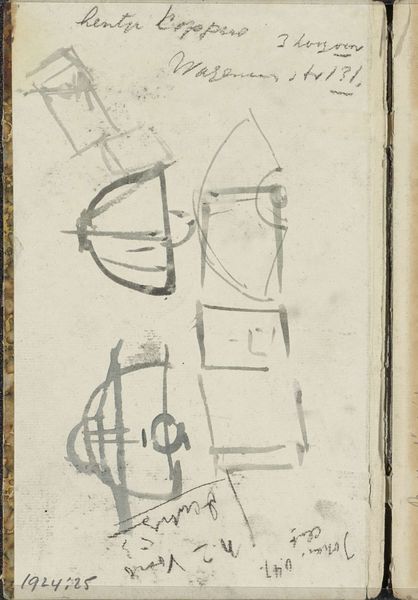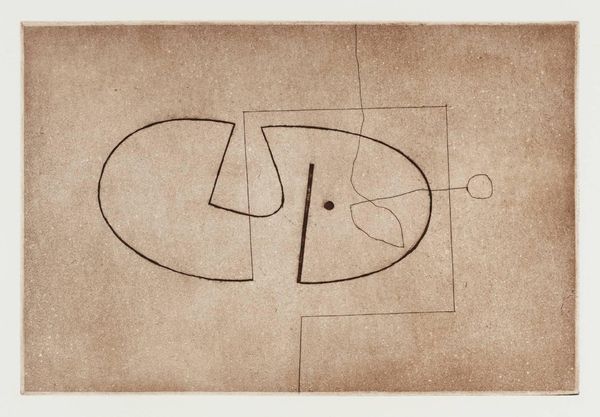
drawing, paper, pencil
drawing
aged paper
toned paper
light pencil work
sketched
sketch book
paper
personal sketchbook
idea generation sketch
sketchwork
geometric
pencil
abstraction
sketchbook drawing
sketchbook art
surrealism
Copyright: Public domain
Curator: This is a drawing by Lajos Vajda. While undated, it’s rendered in pencil on paper. Editor: It has an ephemeral feel, a barely-there quality, like a memory struggling to materialize. It feels very personal, the kind of sketch one might find tucked into a private journal. Curator: Indeed. Note the geometric framework. The structure is seemingly based on squares and circles with a kind of flattened perspective reminiscent of Synthetic Cubism. Vajda utilizes these basic shapes to represent buildings, human profiles, and seemingly random geometric elements. It’s interesting to analyze the relationships between these forms and the visual weight he gives each element. Editor: And that superimposition creates a layering of visual and psychological space. Considering the historical period when Vajda was working, post-World War I and pre-World War II Hungary, a period rife with social and political upheaval, this layering can be read as the fracturing of identity. The overlaying of architectural and figural elements speaks to the instability of place, both personal and political. I am seeing these structural elements in terms of intersectional experience—the personal literally built upon political elements, or vice-versa. Curator: That's an interesting perspective. What stands out to me is the simplicity of the lines, which almost function independently, constructing objects without fully committing to them, if you follow. This lends the image a feeling of incompleteness, perhaps inviting the viewer to actively engage with its construction. Editor: But that “incompleteness,” if we accept your term, Curator, is the very thing that renders the piece so powerfully complete to me. The work refuses closure, instead foregrounding the anxieties that are inseparable from being a person negotiating cultural shifts and possible persecution, especially for a Jewish Hungarian artist such as Vajda. It captures the ongoing tension between erasure and recognition, absence and presence, loss and possibility. Curator: I see. Although my focus is usually fixed on form, structure, and the material expression of the work, it is compelling to reflect on what we can take away from how the broader societal context interacts with the intentionality of artistic marks. Editor: Absolutely. These sketched-out geometric tensions of structure on the one hand and lived cultural experiences on the other, provide powerful resonances in our contemporary moment, and invite ongoing re-evaluation of our historical trajectory and lived experiences.
Comments
No comments
Be the first to comment and join the conversation on the ultimate creative platform.

